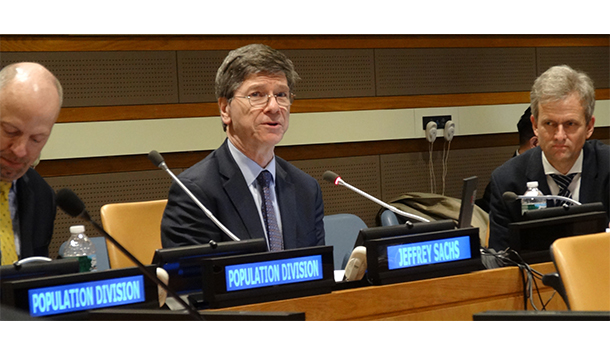Anne Williamson is being generous to Jeffrey Sachs (“The Many Reinventions of Jeffrey Sachs,” View, February). I was in Poland on sabbatical from Rice University in the same time frame working (gratis) for Unido in the introduction of Deming Statistical Process control.
I trained economists and mathematicians in the Deming paradigm and then sent them two by two to ten factories. As an American engineer, I believe you need to get down on the work floor with the guys in blue collars. (I speak Polish poorly but comprehensibly.) And I found workers who were at least the equal of their peers in the United States.
My efforts were somewhat successful. Four of our ten companies survived. The failure rate under Sachs’s policy of lending no money to state-run companies was 95 percent.
It was abundantly clear to anyone who got involved that Sachs was trying to destroy these companies. Their remains were bought at five cents on the dollar by capitalists from America and the U.K. Many of these factories were the only factory in their town. Millions were thrown out of work. For years afterward the average worker in Poland did worse under cold-turkey capitalism than in the communist times.
I have always supposed that is precisely what Sachs and Soros wanted.
In Russia, Sachs worked even more evil. There, big companies were bought for one cent on the dollar (using capital from Soros-like sources in Britain and America). Thus came the oligarchs who contributed nothing and made out like princes. One of these, Oleg Deripaska, opened the Cerberus Fund in the United States with Dan Quayle as chief lobbyist and John Snow as CEO.
Much evil was done by the likes of Jeffrey Sachs. I suppose he will at some point receive a Nobel Prize.
—James R. Thompson
Houston, TX
Ms. Williamson Replies:
What James R. Thompson alleges regarding the true purposes of Jeffrey Sachs’s advice to both Poland and Russia—the bankruptcy of state-run firms via credit-starvation and the overall deindustrialization of Eastern Europe and Russia in order to provide lucrative assets at rock-bottom prices to Western investors—is correct.
But Sachs did not achieve this result on his own; he had many willing collaborators, including the G7, the U.S. Treasury, the IMF, the World Bank, the Harvard Institute for International Development, and various other U.N. outfits like Unido. A detailing of those institutions’ roles and the connections between them and the Jeffrey Sachs-George Soros collaboration requires a much larger discussion than a single magazine article affords, which is why I am now completing a book on the subject.
When he was working in Poland, Sachs proposed the establishment of a new “sister IMF” that would utilize a formula for dealing with financial disasters comparable to a business bankruptcy: The afflicted nation declares itself bankrupt, the IMF steps in with many, many billions in operating capital, and then economic experts—people just like Jeffrey Sachs!—would function much as bankruptcy-court administrators do, rolling up their sleeves, putting the sharpened end of their pencils to the tips of their tongues, and going to work.
What Sachs wanted from the get-go was the legalization and institutionalization of what he, Soros, the Wall Street gang, Ivy League endowments, and the multilateral agencies and committees had intended to do, and were doing, from the deep shadows cast by their self-constructed wall of public baloney. All the while, the evidence of the insiders’ crimes was concealed under the federal government’s all-purpose secrecy rubric of “national security.”

Leave a Reply